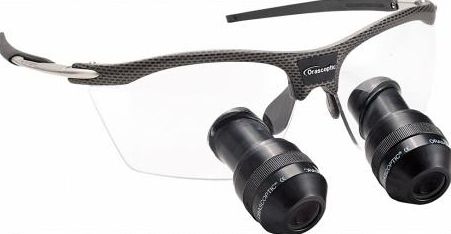Recent study quantifies the benefits of magnification loupes across dental specialties
A recent study published by Ronald N. Brown, DDS of the UT Health Science Center’s Dental School uses two previous studies examines the link between a dental hygienist’s posture and the use of magnification lenses to extrapolate similar conclusions across multiple applications and dental specialties.
A recent study published by Ronald N. Brown, DDS of the UT Health Science Center’s Dental School uses two previous studies examines the link between a dental hygienist’s posture and the use of magnification lenses to extrapolate similar conclusions across multiple applications and dental specialties.
To date, only personal opinions and anecdotal evidence exist supporting the claim that use of magnification lenses exerts a positive influence on the operature posture of those outside of dental hygienists, and little empirical evidence exists to support claims to the contrary. To evaluate these claims, the Dr. Brown examined two previous studies on the posture of dental hygiene students.
The first study’s objective was to ascertain outcomes the use of magnification lenses had on the posture of dental hygiene students. Employing a random crossover design, the researchers watched 19 dental hygiene students performing an intra-oral procedure with and without the use of magnification lenses.
After being evaluated by a panel of five dental hygiene educators, the outcome of a paired t-test indicated a more acceptable posture among students utilizing magnification lenses over those wearing only conventional safety glasses.
The second study focused on health-related issues among dental hygienists that rise as a result of poor posture in the operatory. Using a version of Branson’s Posture Assessment Instrument (PAI), researchers videotaped two groups of dental hygiene students performing hand-scaling treatments, one group treating patients using magnifying loupes and the other without. After performing an initial evaluation, the groups were reversed to control for innate differences in natural posture. In any case, both groups were assessed at three time periods for nine posture components on the PAI. The resulting scores showed a dramatic improvement in posture when using loupes, especially for students that learn to perform procedures with loupes upon entering their training program.
Using these studies, Brown extrapolates a quantifiable difference in acceptability of posture and overall benefit for clinicians of any specialty utilizing magnification loupes while also reducing the risk of musculoskeletal disorders.
Magnifying Loupe Options

Designed with a semi-rim framework, Orascoptic’s Rudy Project Rydon wrap-around loupes offer an optimal field of field, plus the adjustable 3.5 magnification telescopes allow for variable working distances.
608-828-5242
www.orascoptic.com

SurgiTel’s lightweight Microprism loupes front lens-mounted loupes reportedly offer ongoing magnification of 3.0x and 3.5x and are available in stylish Oakley frames.
800-959-0153
www.surgitel.com

The Task-Vision Visor Headband loupe offers magnifications of 1.75x, 2.25x and 2.75x plus the distortion-free, acrylic-coated lenses are abrasion resistant and prismatic for optimal convergence.
800-857-5782
www.visionusasupplies.com
offer a panoramic lens design as well as a lightweight design that offers a 50° declination angle to prevent hunching and eye strain. Additionally, the loupes come with a double-hinge design that lets you lock in personal settings when the lenses are flipped up or down.
888-360-0033
www.perioptix.com
ACTIVA BioACTIVE Bulk Flow Marks Pulpdent’s First Major Product Release in 4 Years
December 12th 2024Next-generation bulk-fill dental restorative raises the standard of care for bulk-fill procedures by providing natural remineralization support, while also overcoming current bulk-fill limitations.

